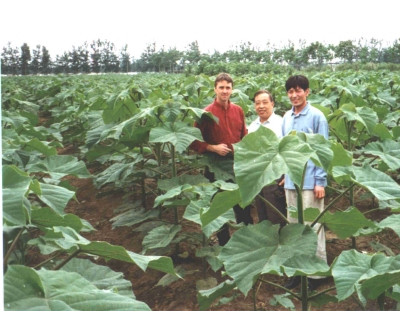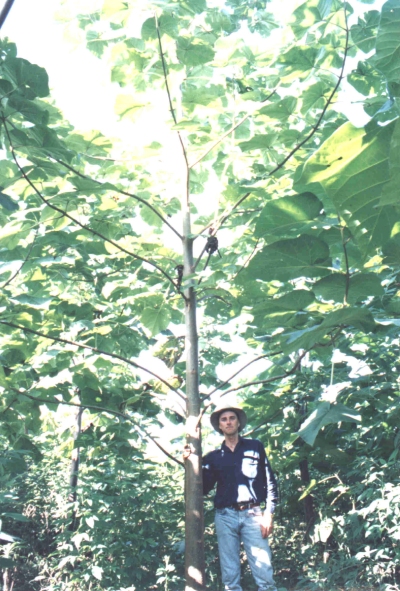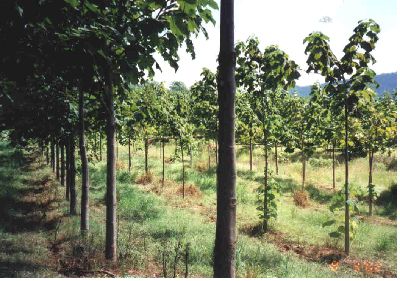Kiri Forestry Enterprises |
Kiri tree Genestock
It is absolutely vital to start with selected high quality genestock. Genestock selection is what separates a racehorse from a cart pony, or a Pink Lady apple from a wild crab-apple.
There are nine species of Paulownia, and these are found naturally over a wide range in China. This means that the Paulownia genus has a wide range of growth habits and performances. Only some species are commercially suitable, and only some of the individuals within those species are tall, straight, fast-growing trees. A variety which grows well in the first year does not necessarily have long-term vigour. For example, Chinese research (and my own experience), has demonstrated that at least 3 years of growth is required to produce a high level of confidence that the tree which is growing well at an early age is going to produce a good sized log several years later. |
 |
Paulownia development in Australia has suffered from widespread propagation of inferior varieties, including their use by some of the major prospectus companies. When Paulownia first became popular in Australia in the early 1990’s, most suppliers were sourcing from a small batch (eg 16 trees) of open-pollinated seedlings grown on one site for one year. Very few bothered to maintain pure mother stock lines. To guarantee good performance, it is important to use plants with known genestock. Propagating Paulownia from root cuttings or tissues (but not seed) will produce clones, ie all genetically identical.
In order to ensure the highest probability of success I have accessed original material from China directly and selected the very best from the offspring, recording and comparing performance over several years on different sites. The selected clones, Kiri Jade Empress Trees , have excellent form, and vigorous height and diameter growth with minimal branch diameter. |
 |
The difference in growth performance is very important, for example a 1cm difference in diameter on a 40 cm tree (ie 41cm vs 40cm) could be worth around $20 in todays timber values. A 30cm tree is worth more than 50% more than a 25cm tree. This is because handling costs, sawn recovery and a product values are very strongly linked to piece size. Hence even a minor difference from clone selection can make a very big difference to the bottom line.
Here is a comparison of Kiri clones (left) and ordinary Paulownia (right) growing under exactly the same conditions at age 15 months. The clone on the right was one of the best trees from a high quality riverbank site and had reached over 40cm diameter in 8 years; however when grown in less favourable soil, it was clearly a relatively poor performer.
|
 |